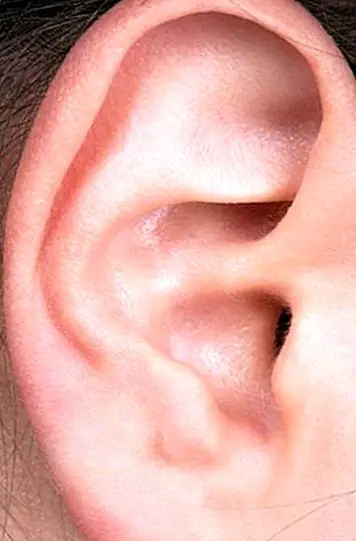The color of urine and its medical meaning
The urine It consists of a liquid composed mainly of water and by different substances that our body separates in order to eliminate them from our body through urination. It is produced by our kidneys, which are precisely responsible for filtering different wastes (known as urea) and the excess water of our blood. From the kidneys this urine comes through two thin tubes known as ureters to the bladder, where it is stored until we begin to feel like going to the bathroom.
Since the bladder has really little storage capacity, it is not adequate hold on to the goats to go to the bathroom, because if it is a regular habit the bladder tends to widen and enlarge, urine infections, vesicoureteral reflux, chills and pelvic pain can occur. Therefore the bladder enlarges or swells when it is full of urine, and becomes smaller again when it is empty.

When urinating, different problems can occur when urinating. Among the most common causes we can mention the following: urinary tract infections, kidney failure, enlarged prostate, problems with bladder control (such as interstitial cystitis, urinary incontinence or overactive bladder), or the possible existence of an obstruction that does not allow the bladder to be properly emptied.
Be that as it may, the truth is that the color of urine can tell us a lot about our state of health, given that its variation in both color and smell is an indication of the existence of a urinary or health problem.
What is the normal color of the urine?
Usually the color of the urine is pale yellow. And it becomes a clear indicator of the degree of hydration of our body. This means that the clearer it is to urine the better hydrated we are, so that having a pale yellow urine and clean is a good sign that tells us that we are actually hydrating properly and properly.

But we must be careful, since a very transparent urine can be an indication that the person suffers from diabetes insipidus, which arises when the kidneys are unable to prevent the correct elimination of water. In these cases it is common for the person to urinate more than five liters a day.
The abnormal colors of urine
Whenever we go to the bathroom to urinate we must pay attention to the color of the urine, to make sure that we are facing an appropriate and healthy tone, or if we are facing a sign that our body is not quite right:
- Red urine color: urine stained red is a cause for alarm because it can indicate the presence of blood in the urine, either by a problem in the prostate or kidney, or in more serious cases by the presence of a tumor in the bladder. However, we must also pay attention to what we have eaten or drunk before urinating, since foods such as red fruits, cranberries, red tuna, beet or rhubarb can be a cause of reddish or pinkish urine. The key is to keep in mind if we have eaten some of these foods, and if the color of the urine returns to normal after continuing to urinate several times.
- Turbid or white urine color: can be an indication of the presence of a bacterial infection. In men, this color may be common when they suffer from retrograde ejaculation (when they ejaculate and the semen exits towards the urethra instead of outwards).
- Purple urine color: although it is a very infrequent urine color tone, the fact is that it can be an indication that the person suffers from a genetic disease known as porphyria, caused by an excess of heme production, a substance with purple pigmentation which helps the transport of oxygen by our body.
- Orange or dark yellow urine colorIt can be caused by the consumption of group B vitamins or carotenes, medicines used to treat urinary tract infections or laxatives.
- Brown urine color: it can be produced by a regular consumption of laxatives (in whose composition we find senna), or by having eaten too many beans. However, if the urine presents a brown tone with faecal remains, it may be an indication that there is communication between the bladder and the intestine, as a consequence of a vesico-intestinal fistula.
- Blue-green urine color: although it is a type of rare urine it is possible that it appears by the consumption of some medicines for example for the treatment of Parkinson's disease or antidepressants, especially if they consist of a compound known as phenol.

As we see, we must pay attention to our urine to be sure if we are hydrating properly, or to check if maybe we could be suffering from a certain condition or health problem.In case the color of the urine changes and is not due to the consumption of medicines or certain foods or beverages, we should go to our doctor, especially when this abnormal color of the urine does not disappear with the hours. This article is published for informational purposes only. It can not and should not replace the consultation with a Physician. We advise you to consult your Trusted Doctor. ThemesKidneys


